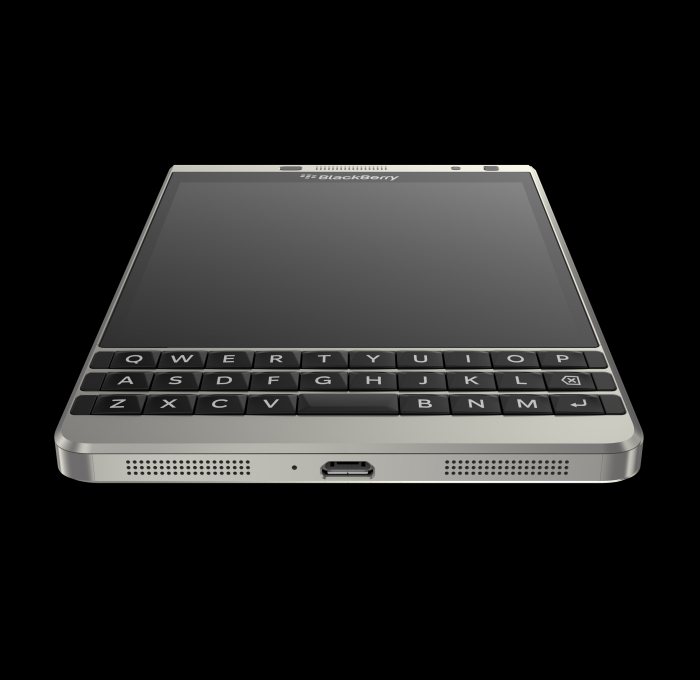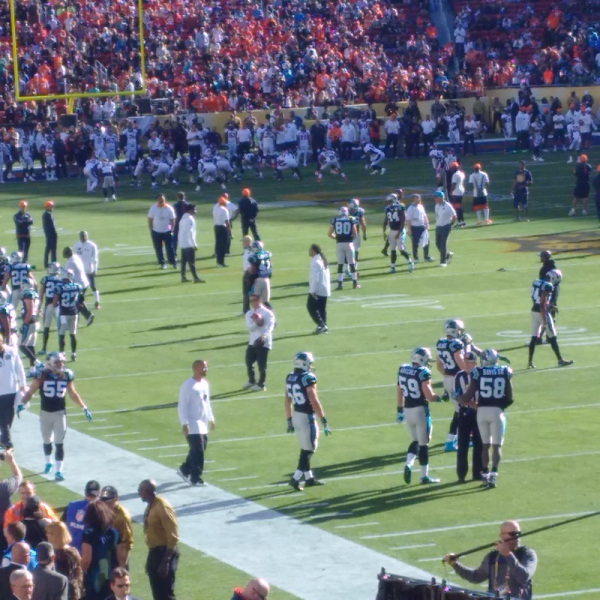I’ve been a huge Carolina Panthers fan since the team started in 1995, so when I had the opportunity to see my favorite team play the Denver Broncos in Super Bowl 50, I immediately bought my ticket. While the game didn’t end (or really even begin) in our favor, it was a great experience to be able to cheer my team on the biggest stage in professional sports.
I’m also a longtime iPhone user, but as a newish writer for Inside BlackBerry and Inside BlackBerry for Business, I recently bought a Passport Silver Edition to use for work. I hadn’t had a lot of time to use it yet, so when I booked my Super Bowl trip from Charlotte to the Bay Area, I thought it was the perfect chance to give it a real workout against my iPhone 6. Here’s how I see them stacking up.
(Read this piece on happy Passport users who switched from an iPhone. And learn what these other professionals think about the BlackBerry Passport, including: celebrity chef Tyler Florence, a top fashion blogger, an international video game company executive, a truck driving social media specialist, a Vegas music promoter, a technology journalist, a heart surgeon, a tech startup founder, a sales director, a senior hospital executive, a manufacturing executive and a non-profit founder.)
Battery life
Super Bowl Sunday is a long, active day, so battery life is important. We left our hotel at 9:30 am and didn’t get back until around 11 pm. Both my iPhone and the Passport are fairly new devices (I’ve had the iPhone for about six months and the Passport for one), and both devices’ batteries held up through the day, although the iPhone ended up with a bit less charge than the Passport. But, I would expect the new Passport and iPhone to have pretty similar battery life, since the out-of-the-box specs are similar on both: 14 hours of talk time and 11 hours of Internet on LTE or 3G wireless. I’ll be curious, though, to see how each holds up over time, since BlackBerry is well-known for long-lasting batteries and Apple, well, isn’t.
Keyboard
I’ve been using a touchscreen for years, so it took me a little time to get used to the physical keyboard on the Passport. Once I got the hang of it, I really liked it – it’s nice to feel the keys move under my fingers, and I found myself making fewer typos because it was easier to tell whether I’d hit the right key or not. I also liked that my most commonly used non-alphabet characters (such as @, # and .) were right there on the touchscreen so I didn’t have to switch to a different screen to use them, as I would have to on the iPhone. I use autofill words a lot on my iPhone to save typing, and it was great to have that feature on the Passport, too, when sending messages to my friends back home about the halftime show and the game.
Camera
The camera is where I noticed the biggest – and most immediate – difference between the iPhone and the Passport. I was really impressed with the 5x digital zoom on the Passport – I could get much closer to the action with its zoom versus the iPhone’s. And, after checking the two devices’ specs, it’s no wonder the Passport was so impressive to me: my iPhone 6 has an 8-megapixel camera, which isn’t in the same neighborhood as the Passport’s monster 13-megapixel camera.
Screen and overall phone size
I have a petite frame, so the Passport wasn’t as easy for me to hold or tuck into my pocket compared to the iPhone. But the larger Passport improved the keyboard and the display. It’s a lot easier to see what you’re typing and watching on the Passport’s 1440×1440, 453 ppi screen, versus the iPhone’s 1334×750, 326 ppi display. The Passport’s larger size would be fine when I need to do serious work and have my purse or another bag with me, but if I need a phone to tuck into my pocket when I’m going to the game and want to avoid the bag-check line, I’ll probably choose the iPhone. A taller or larger person might not have the same issues I have with pocket-ability of the Passport.
Hub
I’ve read a lot of praise about the BlackBerry Hub, and now I understand why BlackBerry users are such fans. Having access to all of my communications – email, text messages, calls, BBMs, social media, etc. – on one screen is really sweet. This is a power productivity feature that’s really lacking in the iPhone.
Apps
With Apple’s market share, it wasn’t a surprise that the iPhone beat the Passport for app availability. Via the Amazon Appstore, the Passport does come with most of my most commonly used apps onboard, like Dropbox, LinkedIn, YouTube, etc., and it was easy to access BlackBerry World to add the iGrann app for Instagram and other apps. BlackBerry’s new Android-powered PRIV overcomes this limitation with full access to the Google Play store, but the iPhone wins the app battle against the Passport.
 Connectivity
Connectivity
Getting on the WiFi at the state-of-the-art Levi’s Stadium was super easy with both devices. While the Panthers’ Bank of America Stadium in Charlotte is our team’s home sweet home, I have to give due credit to the year-old stadium in Santa Clara for its exceptionally easy, fast and free Internet service. (Our stadium does have free WiFi, but it doesn’t have enough capacity for 72,000 fans pouring in for NFL games and the other events held at the stadium. I’ve heard this is a planned offseason upgrade, and I hope that’s true.)
Overall, I’d give the Passport the nod for work productivity because of the Hub and keyboard and for the camera, and the iPhone kudos for portability and app selection. Connectivity and (so far) battery life are a draw. When I need a powerful and more secure phone for work, I’ll take my BlackBerry over my iPhone.

